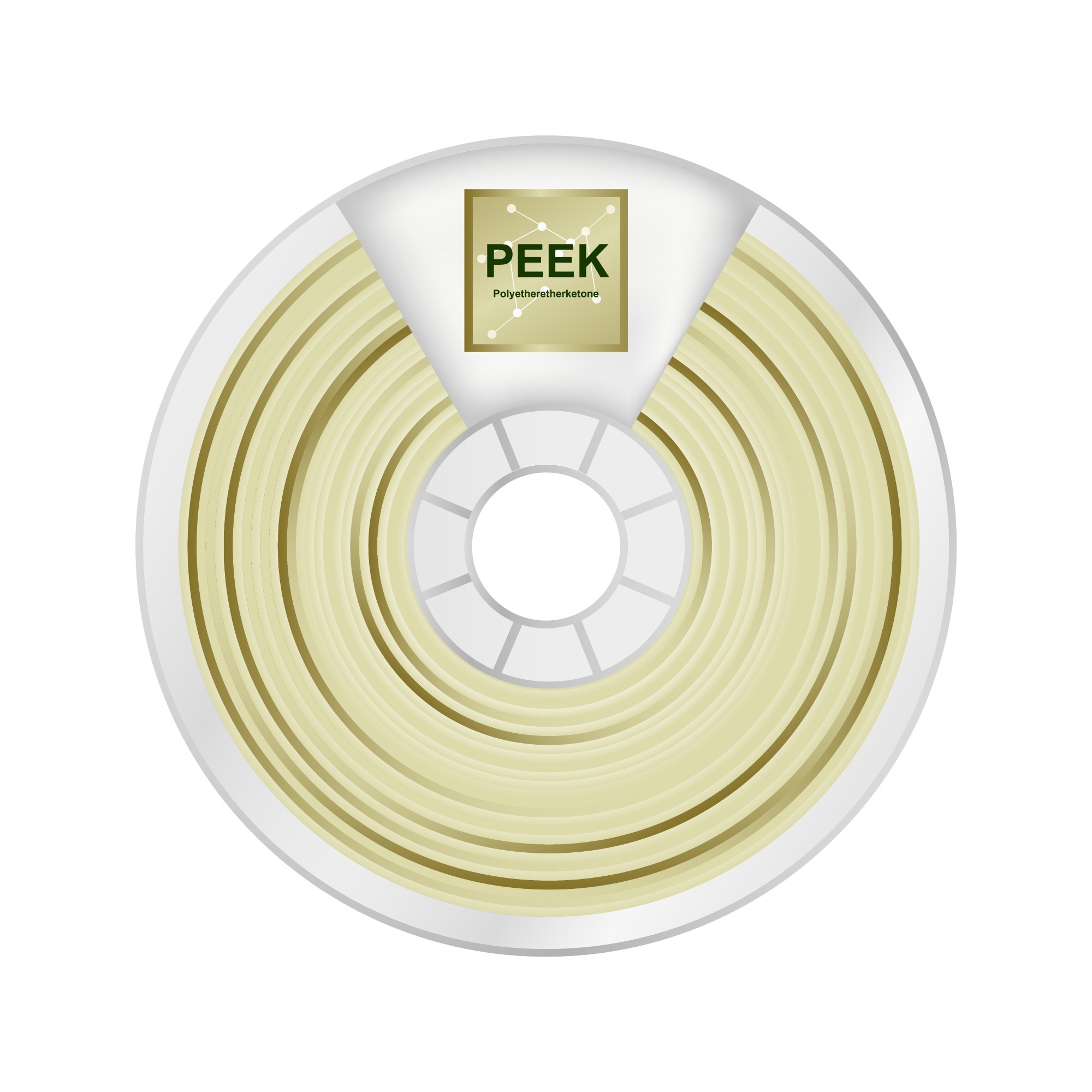In a paper recently published in the journal Additive Manufacturing, researchers designed and prepared fluorene-based poly (ether ether ketone)s (FD-PEEK) to enhance the interlayer strength during the printing of poly (ether ether ketone) (PEEK) parts.

Study: Slowing crystallization to enhance interlayer strength of 3D printed poly (ether ether ketone) parts by molecular design. Image Credit: petrroudny43/Shutterstock.com
Background
Additive manufacturing (AM), commonly known as 3D printing, is a manufacturing technology employed in several applications, including industrial manufacturing, medical treatment, and construction, and is based on rapid prototyping. The most advantageous AM technology is fused deposition modeling (FDM), known for its high rate of material utilization, low operating costs, and wide applicability.
FDM commonly uses industrial thermoplastic-based filaments. PEEK has received significant attention as an effective engineering plastic owing to its mechanical properties and high temperature and radiation resistance. In previous studies, 3D-printed PEEK parts have exhibited strain at break and tensile strength of 31% and 96 MPa, while the flexural strength and modulus could reach 115 MPa and 3.7 GPa, respectively. The introduction of fillers such as glass fibers and carbon fibers has been used to further enhance its mechanical properties.
However, the expansion of 3D-printed PEEK’s application is challenging due to the mechanical anisotropy occurring during the FDM process. Moreover, the faster rate of crystallization leads to the rapid formation of crystals when the molten PEEK temperature drops below the crystallization temperature. This restricts the movement of molecular chains leading to weak interlayer strength of the 3D-printed parts in the z-axis direction.
About the Study
In this study, the team introduced copolymerization groups to reduce the rate of crystallization. However, this is believed to disrupt the molecular regularity and lead to a drop in crystallinity, thereby weakening the PEEK’s mechanical properties. To compensate for this, a rigid fluorene-based monomer was used to improve the mechanical properties of the 3D-printed crystallizing PEEK.
The team designed and produced FD-PEEK by controlling the 4,4’-(9-fluorenylidine) diphenol to hydroquinone molar ratio. The PEEK copolymer was prepared with 10 mol% fluorene content. Thereafter, a twin-screw extruder was used to melt and extrude FD-PEEK. The FD-PEEK specimens were fabricated using a 3D printer. The cooling rate’s effect on the specimen performance was studied at chamber temperatures of 230 °C and 25 °C.
The PEEK copolymers’ chemical groups were determined using Fourier transform infrared spectroscopy (FTIR), while a differential scanning calorimeter (DSC) was used to characterize the materials’ thermal and crystallization behavior. Thermogravimetric analysis was used to characterize the thermal stability, whereas the FD-PEEK’s crystallization morphology was observed with polarized optical microscopy (POM).
Observations
The fluorene-based structure depicted slower PEEK crystallization while X-ray diffraction (XRD) peaks indicated that an increased fluorene molar ratio decreased the FD-PEEK crystallinity while retaining similar solvent resistance as that of PEEK. Furthermore, the interlayer strength of the 10%-FD-PEEK substantially increased to 41 MPa, in line with that of commercial PEEK resin used in 3D printing. Additionally, 15% FD-PEEK showed a higher interlayer strength for the 3D-printed parts of 67 MPa and a 500% increase in the strain at break of 11.23%, increasing from 1.75%.
The drop in crystallization temperature (Tc) was followed by rapid crystallization in PEEK filaments which further inhibited molecular chain diffusion. However, the slow crystallization of FD-PEEK showed that the molecular diffusion motion could be maintained over a prolonged period. Moreover, the reduced rate of crystallization of FD-PEEK due to the presence of the fluorene groups allowed adequate time for spherulite growth. A larger spherulite size may also be favorable in improving the mechanical properties.
Introducing the 10 mol% fluorene groups increased the activation energy of the crystallization, further making the crystallization difficult in non-isothermal conditions. This indicated that the interlayer fusion during 3D printing can be efficiently improved due to the slow crystallization of FD-PEEK. This can be further promoted by reducing the rate of cooling of the printing process.
Conclusions
To summarize, the researchers designed and produced FD-PEEK with differing fluorene group contents and determined that the interlayer strength of the 3D-printed PEEK parts was improved due to the inhibition in crystallization by fluorene, which resulted in a reduced crystallization rate.
The implementation of the fluorene groups also increased the rigidity of the polymer chains. Furthermore, the 15%-FD-PEEK specimens showed interlayer strain at break and strength to be over 500% and 400% more than that of PEEK, respectively. On the other hand, the 10%-FD-PEEK showed balanced tensile strength values in the x- and y-axes at 94 MPa and 90 MPa, respectively, as well as interlayer strength along the z-axis reaching 41 MPa. This was comparable to AM 200.
The non-isothermal and isothermal kinetics further confirmed the slow crystallization arising due to the inhibited spherulite growth from the introduction of the fluorene groups. According to the authors, the results could substantially support 3D printing engineering applications and provide novel insights into the enhancement of the performance of semi-crystalline AM materials.
More from AZoM: A to Z of Electromagnetic Shielding
Disclaimer: The views expressed here are those of the author expressed in their private capacity and do not necessarily represent the views of AZoM.com Limited T/A AZoNetwork the owner and operator of this website. This disclaimer forms part of the Terms and conditions of use of this website.
Source:
Yingshuang Shang, et al., Slowing crystallization to enhance interlayer strength of 3D printed poly (ether ether ketone) parts by molecular design, Additive Manufacturing, (2022) doi: https://doi.org/10.1016/j.addma.2022.103104